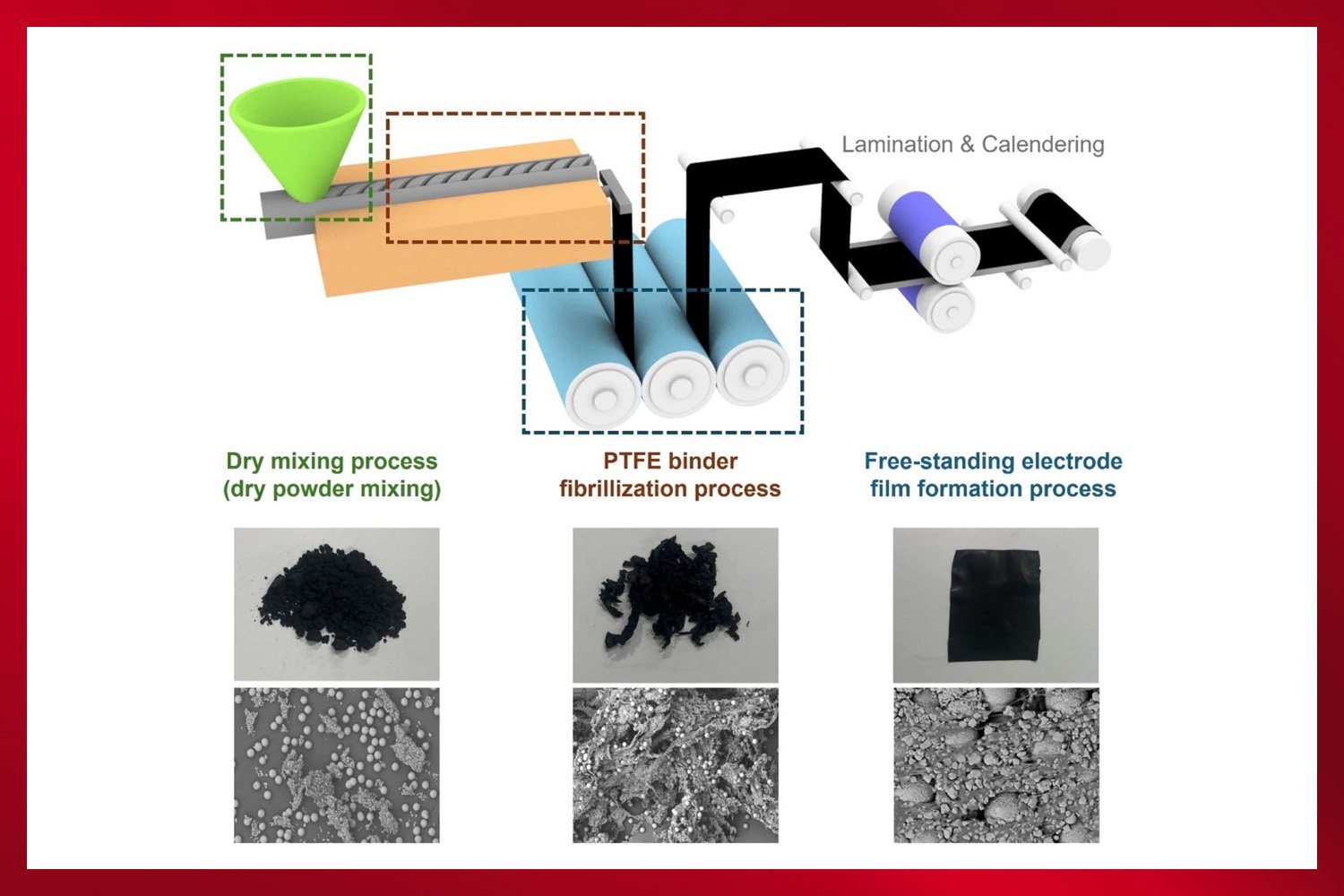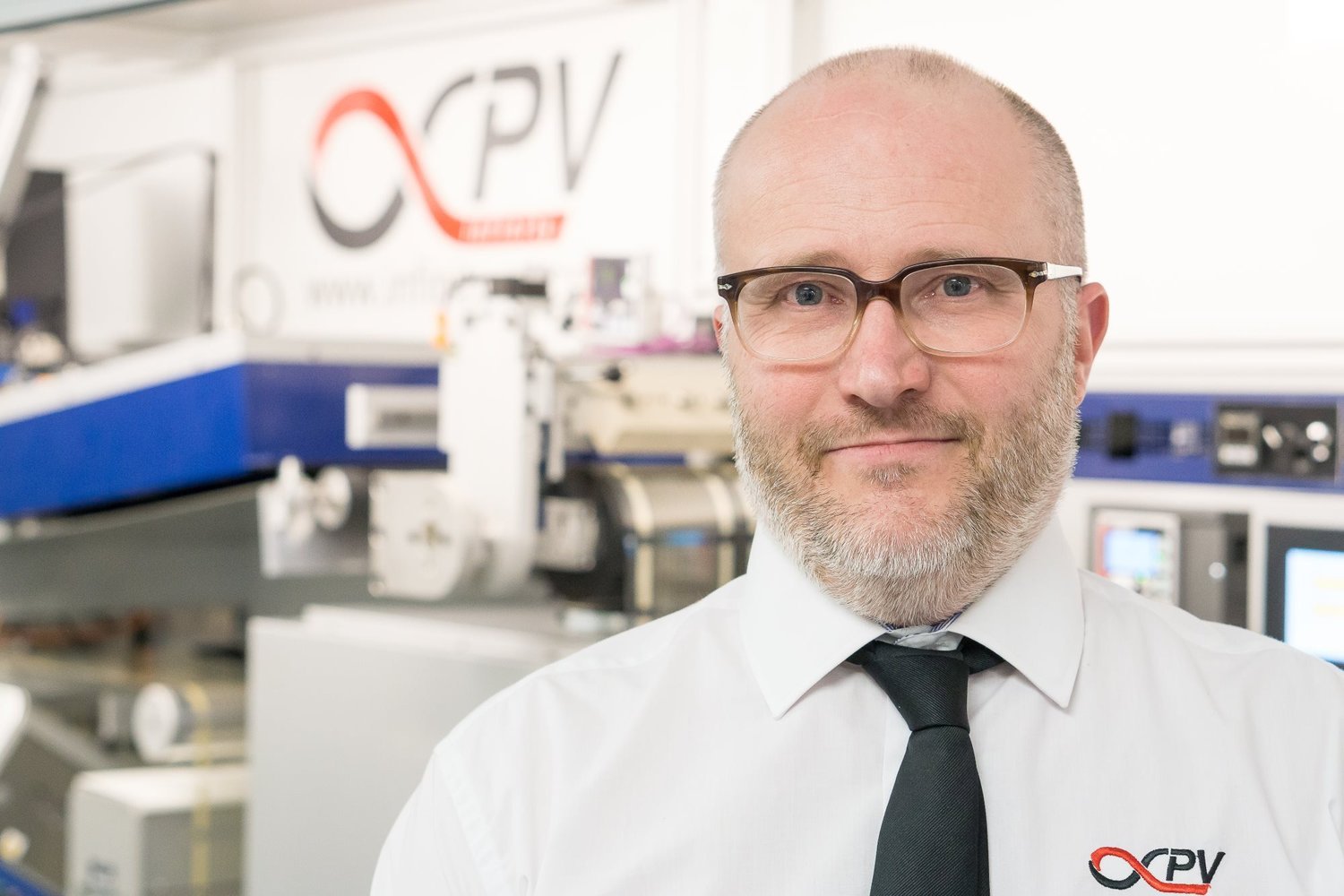Roll-to-Roll Dry Coating: A Scalable, Sustainable Future for Lithium Battery Manufacturing
Reimagining Battery Manufacturing: A Shift Toward Dry Coating Technology
A recent study titled “Sustainable and cost-effective electrode manufacturing for advanced lithium batteries: the roll-to-roll dry coating process”, published in Chemical Science, offers a comprehensive overview of a promising technology set to reshape how lithium batteries are made. Amidst the global push for carbon neutrality and the rapid transition to electric vehicles (EVs), the limitations of current battery manufacturing methods have come into sharper focus. To power the future, safely, efficiently, and affordably, new approaches are needed.
This review focuses on one of the most industrially viable and environmentally promising solutions: the roll-to-roll dry coating process. Unlike traditional wet coating methods that rely on toxic solvents and energy-intensive drying processes, dry coating techniques eliminate solvents altogether, simplifying production, reducing costs, and supporting sustainable practices. In particular, the roll-to-roll variation of this process stands out due to its scalability and compatibility with mass production.
The authors provide a deep dive into the mechanisms, advantages, and real-world potential of this process, offering both theoretical context and practical evaluations. The review also addresses how this method fits into the broader picture of lithium battery evolution—including its relevance to next-generation formats like all-solid-state batteries (ASSBs) and lithium–sulfur (Li–S) systems.
Key Highlights
Eliminates the need for toxic solvents, improving safety and sustainability in electrode manufacturing.
Supports the production of thick electrodes—key to increasing energy density in lithium-ion batteries.
Uses PTFE binder fibrillization to create strong, porous networks that improve electrode durability and conductivity.
Reduces energy use in manufacturing by up to 46% and costs by nearly 19% compared to wet coating.
Enhances microstructural uniformity, improving electrochemical performance and cycle stability.
Already applied in industry: Tesla uses dry coating for anode production, highlighting its scalability.
Opens pathways for higher-capacity next-generation batteries, including ASSBs and Li–S systems.
The Laboratory Roll-to-Roll Coater is the ideal coating machine for scaling up to roll-to-roll processing of battery electrode materials or for testing and optimizing battery electrode slurries.
Rethinking the Manufacturing Model: From Wet to Dry
The wet coating process, long the industry standard for lithium battery electrode fabrication, comes with considerable downsides. It involves the use of organic solvents like NMP, which are both hazardous and expensive to handle due to environmental and safety regulations. The process is also time- and energy-intensive, requiring careful solvent evaporation and recovery steps.
More importantly, the wet process faces fundamental technical limitations when applied to thick electrodes—a necessary component for boosting the energy density of batteries. As electrodes get thicker, solvent drying leads to binder migration, resulting in uneven distributions of active material and pores. This compromises mechanical integrity, causes cracks during calendering, and hinders lithium-ion transport—ultimately degrading performance.
The roll-to-roll dry coating method offers a compelling alternative. By replacing solvent-based methods with dry mixing and mechanical processing, it allows for the uniform integration of active materials, conductive additives, and binders—without the complications of liquid-phase behavior. The result is a more homogeneous electrode microstructure, which supports both mechanical robustness and superior electrochemical performance.
The Science Behind the Process: PTFE Fibrillization and Process Design
At the heart of the roll-to-roll dry coating method is polytetrafluoroethylene (PTFE), a binder known for its unique fibrillization behavior. Under the influence of shear forces, PTFE transitions into fibrous structures that physically entangle and bind other electrode components together. This fibrous network not only holds the electrode intact mechanically, but also maintains porosity and ensures good ionic and electronic connectivity throughout the structure.
The process consists of three main stages:
Dry Mixing: Active materials, conductive additives, and PTFE are uniformly blended.
Fibrillization: Shear force is applied, causing the PTFE to form fibrous networks.
Film Formation: A free-standing electrode film is formed and laminated onto a current collector.
Each step is finely tuned. For example, fibrillization must be carefully controlled; excessive processing can make the electrode brittle, while insufficient fibrillization weakens mechanical integrity. Researchers have explored multiple avenues to optimize the process, such as modifying binder and additive surfaces, using cryogenic milling to reduce PTFE particle size, and adjusting temperature and torque profiles during mixing.
These material and engineering insights are key to producing crack-free, mechanically strong, and electrochemically efficient thick electrodes—something that conventional methods struggle to achieve.
The LR2RC750 Battery Coater is the ideal coating machine for scaling up to roll-to-roll processing of battery electrode materials or for testing and optimizing battery electrode slurries.
Toward Industrial and Next-Gen Applications
Mainstream Lithium-Ion Batteries
Dry-coated electrodes perform well under laboratory and industrial testing, often outperforming wet-coated counterparts. By avoiding binder migration and improving additive dispersion, the dry process ensures better electrical pathways and reduced ionic resistance. Adjustments to materials—such as ozone-treated CNTs for better dispersion or engineered particle morphologies—can further enhance performance.
Electrodes fabricated using this method also exhibit improved chemical stability and less degradation during cycling, especially when matched with optimized electrolytes that minimize side reactions with the PTFE binder.
All-Solid-State Batteries (ASSBs)
ASSBs offer major safety and energy density advantages, but their development has been hampered by the incompatibility between solid electrolytes and solvents used in wet processes. The roll-to-roll dry coating process sidesteps this problem by eliminating solvents entirely, enabling uniform, stable electrode layers and direct integration with sensitive solid electrolytes like sulfides.
Studies have shown that dry electrodes in ASSBs can achieve higher surface coverage and better ionic connectivity than wet-processed alternatives. Innovations like solvate-ionic-liquid-infiltrated binders and dual-particle-size electrolytes have further improved ionic conductivity and mechanical cohesion in these systems.
Lithium–Sulfur Batteries (Li–S)
Li–S batteries are among the most promising next-gen chemistries, but they’re notoriously hard to manufacture at scale due to the fragility of sulfur cathodes. The dry coating method has shown success in fabricating high-sulfur-loading electrodes (>7 mg/cm²) that are both flexible and structurally sound. The PTFE fibrillization process helps to create interwoven networks that stabilize active materials and maintain conductivity.
Recent studies have demonstrated the method’s effectiveness in full-cell systems, combining high performance with practical manufacturability—pushing Li–S batteries closer to commercial viability.
The Slot-die Coater is an excellent choice for researchers focused on developing and optimizing battery electrode slurries at the laboratory scale.
Conclusion: A Platform for the Future of Energy Storage
As battery technology evolves to meet the demands of electrification and grid integration, the manufacturing processes that underpin it must also adapt. The roll-to-roll dry coating process represents a fundamental shift—away from solvent-heavy, energy-intensive fabrication and toward a cleaner, leaner, and more scalable production model.
Its success lies not only in environmental and economic benefits, but also in its ability to solve longstanding technical challenges around thick electrode design, mechanical stability, and performance degradation. By bridging the gap between lab-scale innovation and industrial-scale manufacturing, this process paves the way for high-capacity, next-generation batteries to move from concept to reality.
Continued research into material interactions, process optimization, and integration with emerging battery chemistries will further strengthen this foundation, making roll-to-roll dry coating a cornerstone of sustainable energy storage in the years to come.
Authors
Joonhyeok Park
Jiwoon Kim
Jaeik Kim
Minsung Kim
Taeseup Song
Ungyu Paik
Get Professional Support for Your Battery Coating Needs
Need help with slot-die coating, coating machines, or any related applications?
Contact infinityPV’s experts today for professional guidance and support.
Related Products
Laboratory Roll-to-Roll Coater
A compact and modular high precision roll-to-roll slot-die coater that transforms the way thin functional films are printed and coated.
LR2RC500 Bundle
Probably the world’s most compact R2R slot-die coater, featuring a syringe pump, a 65 mm slot-die head, and an infrared oven for precise lab coating.







